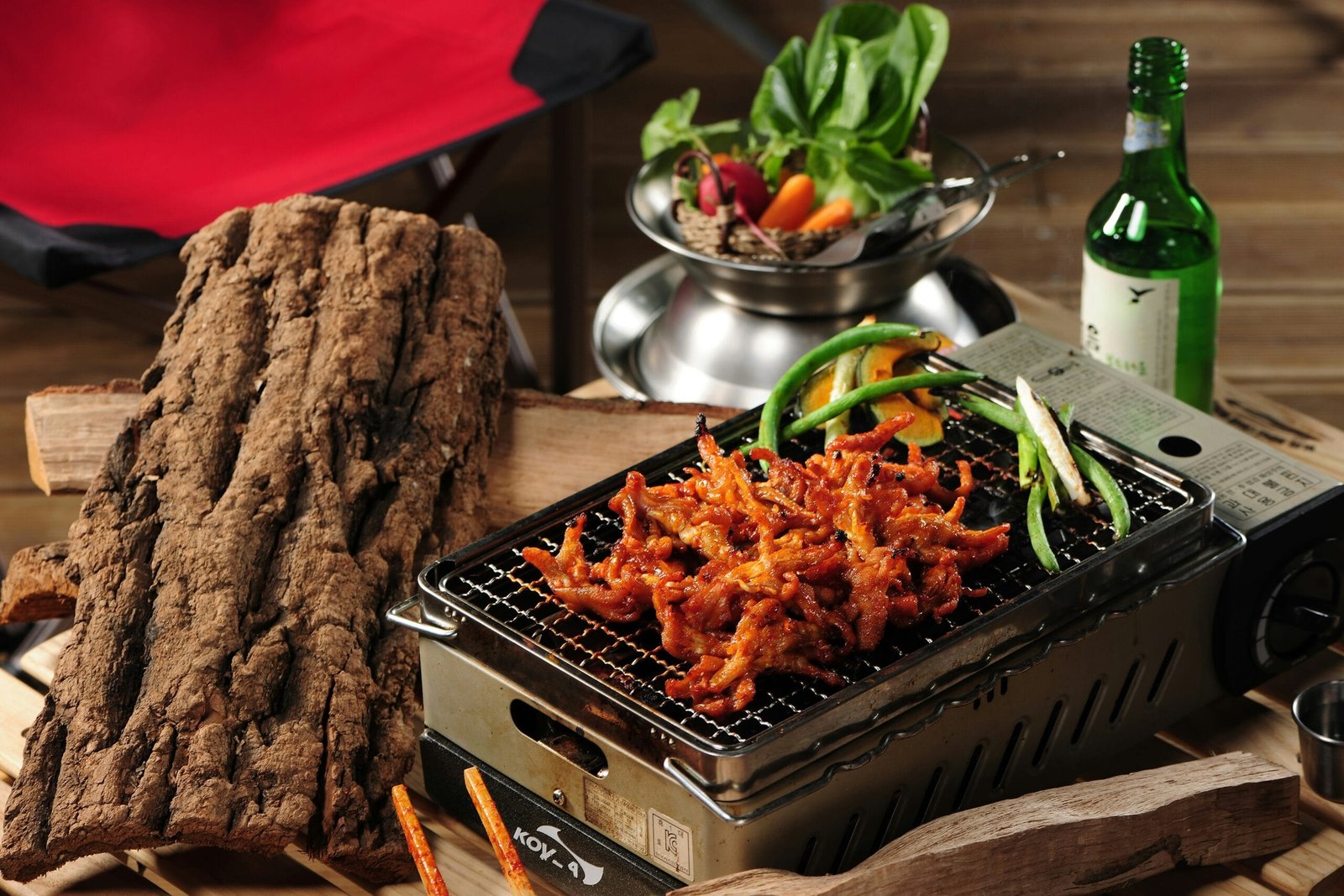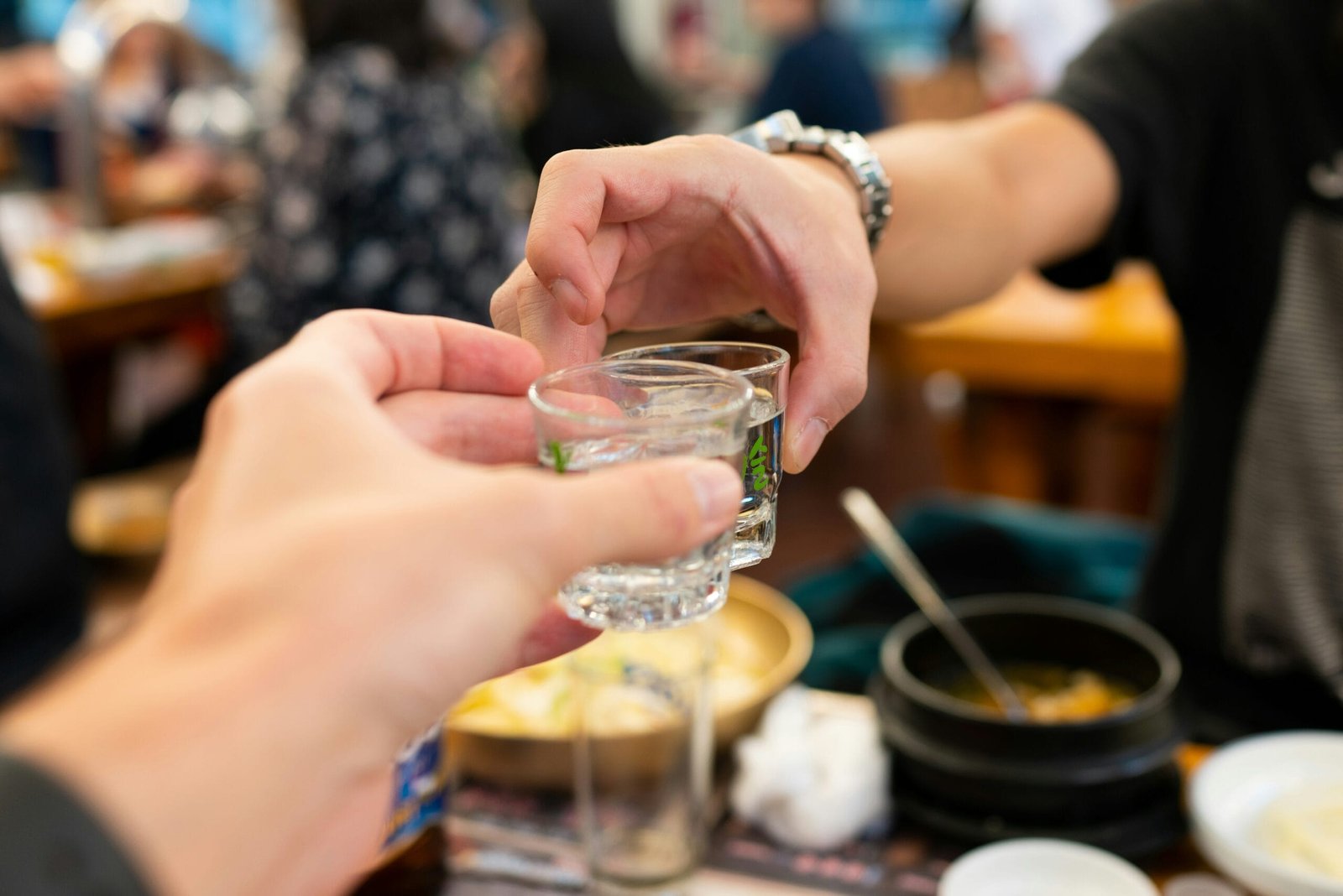Have you ever pondered how traditional Korean grilling techniques have been translated to elevate seafood dishes? If you find culinary adaptations intriguing, especially those that blend age-old practices with fresh ingredients, you’re in for an enlightening discussion. This fascinating evolution is taking the world by storm, merging the vibrant, earthy flavors of Korean BBQ (gogigui) with the delicate profiles of seafood.
The Art of Korean Grilling
The Traditional Grill: A Brief Overview
Traditionally, Korean grilling is an indoor or outdoor affair, often using charcoal or a gas grill. At its core lies a simple premise: bring out the natural flavors of the ingredients by expertly balancing heat and timing. The art of grilling in Korea is not merely a cooking method but a social ritual, embodying flavors, traditions, and togetherness.
Key Ingredients and Tools
The essential tools for a Korean grill are rather simple: a grill pan or gridiron, usually dome-shaped to allow fats to drip away from the meat or seafood, and tongs for turning and manipulating the food. Key marinades typically consist of soy sauce, garlic, sesame oil, and sugar, creating a tantalizing sauce that enhances the browned succulence of grilled items.
Seafood and Korean Grilling: An Unexpected Pairing
Why Seafood?
Koreans have long cherished seafood, given their peninsula’s rich bounty from the surrounding Yellow, Japan, and East Seas. The natural evolution to include seafood in grilling was driven by accessibility and the desire to explore different protein preparation methods. Grilling offers a unique way to intensify the flavor profiles of seafood, complementing the traditional palate.
Health Benefits of Grilled Seafood
Incorporating seafood into grilling practices offers numerous health benefits. Seafood is generally lower in fat than red meat and rich in essential nutrients like omega-3 fatty acids, which are known for supporting heart health. The grilling process requires minimal added fats, thereby preserving nutritional integrity.

Adapting Korean Grilling Techniques
Marinades and Flavor Infusion
Marinades play a vital role in this adaptation, particularly in overcoming or complementing the sometimes potent flavors of seafood. Traditional Korean marinades are adjusted with a touch more acidity, often incorporating ingredients such as gochujang (Korean red pepper paste), ginger, or citrus to cut through the richness of seafood.
Time and Temperature Adjustments
Grilling seafood differs from meat in terms of grilling time and heat management. Fish and shellfish generally require less time on the direct heat, given their delicate texture and lower fat content. Continuous, attentive management of temperature and time ensures that seafood emerges perfectly cooked, juicy, and flavorful.
Korean Grilled Seafood Varieties
Table: Popular Korean Grilled Seafood Dishes
| Seafood Variety | Description of Preparation | Commonly Used Species |
|---|---|---|
| Samgyupsal-style Eel | Eel grilled much like pork belly, often unseasoned for pure flavor | Conger eel, American eel |
| Godeungeo Gui | Mackerel marinated and grilled, typically with salt | Atlantic mackerel |
| Grilled Clams/Shellfish | Shellfish grilled with simple seasoning, sometimes using cheese or butter | Clams, mussels, scallops |
| Grilled Octopus | Tenderized and marinated octopus, grilled to a slight char | Small octopus varieties |
| Haemul-jeongol | A mixed seafood grill, combining various shellfish and fish with seasonings | Assortment: includes squid, clams, octopus |
Mackerel (Godeungeo Gui)
Mackerel has a pronounced fishy flavor, which pairs remarkably well with the boldness of Korean marinades. The high-fat content allows it to remain moist throughout grilling and is commonly served with a side of kimchi.
Grilled Eel (Jangeo Gui)
Eel is often cooked samgyupsal-style to appreciate its rich, buttery texture. Eel grilling is a social affair, capturing the communal aspect of Korean BBQ with friends and family surrounding a table grill.

Challenges and Solutions in Seafood Grilling
Overcoming Seafood’s Fragility
Seafood’s tenderness poses both a challenge and an opportunity. Techniques such as wrapping fish in perforated aluminum foil or banana leaves allow flavors to circulate while maintaining moisture and integrity.
Balancing Flavors and Textures
Achieving harmony involves altering traditional spices and sauces to align with seafood’s subtleness. Ginger, citrus zest, garlic, and chili peppers can be skillfully balanced to bring out sweet and smoky notes without overpowering the main ingredient.
Cultural Impact and Global Expansion
Korean Cuisine’s Worldwide Appeal
As global palates expand, the affinity for Korean flavors grows. Grilling seafood this way showcases a blend of old and new, captivating the hearts of adventurous eaters seeking an authentic experience outside the confines of meat.
Fusion with Other Culinary Traditions
Beyond borders, chefs are experimenting by incorporating local flavors into Korean grilled seafood, resulting in exciting fusion dishes. Consider incorporating miso in marinades or pairing with Southeastern Asian sauces as examples of cultural synthesis.

Conclusion: Your Grilling Adventure Awaits
Embarking on the journey of Korean-style grilled seafood can be as rewarding for you as for those you share it with. Embrace these traditional techniques, adapted lovingly to highlight the subtle nuances of the seafood you choose. Whether it’s an alfresco summer barbecue or a cozy winter gathering, these techniques offer a flavorful, health-conscious alternative to traditional meat-centric grills.
So, are you ready to experiment with these time-honored Korean grilling techniques to bring something new and exciting to your table? Your transformation of seafood cooking awaits—spiced with flavors, steeped in tradition, and destined for delicious discoveries.
